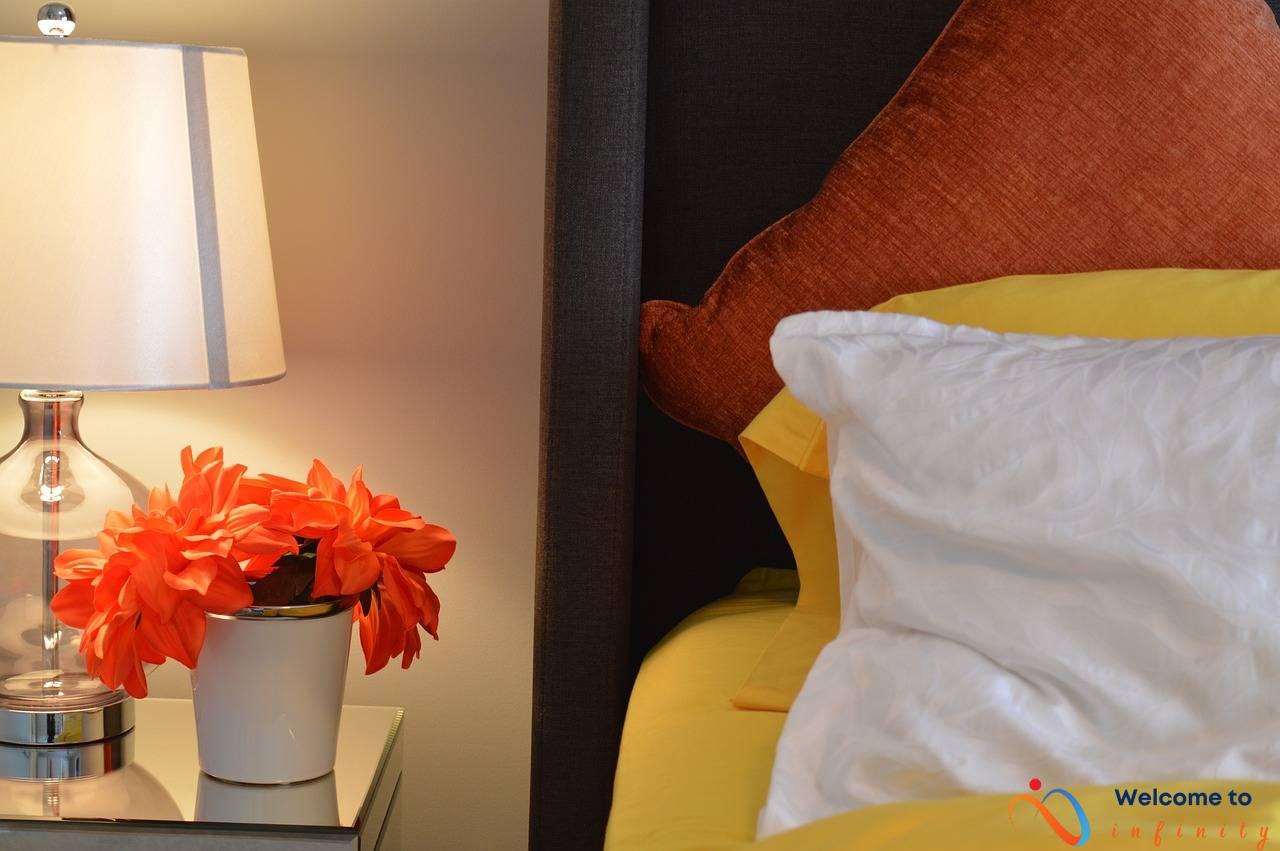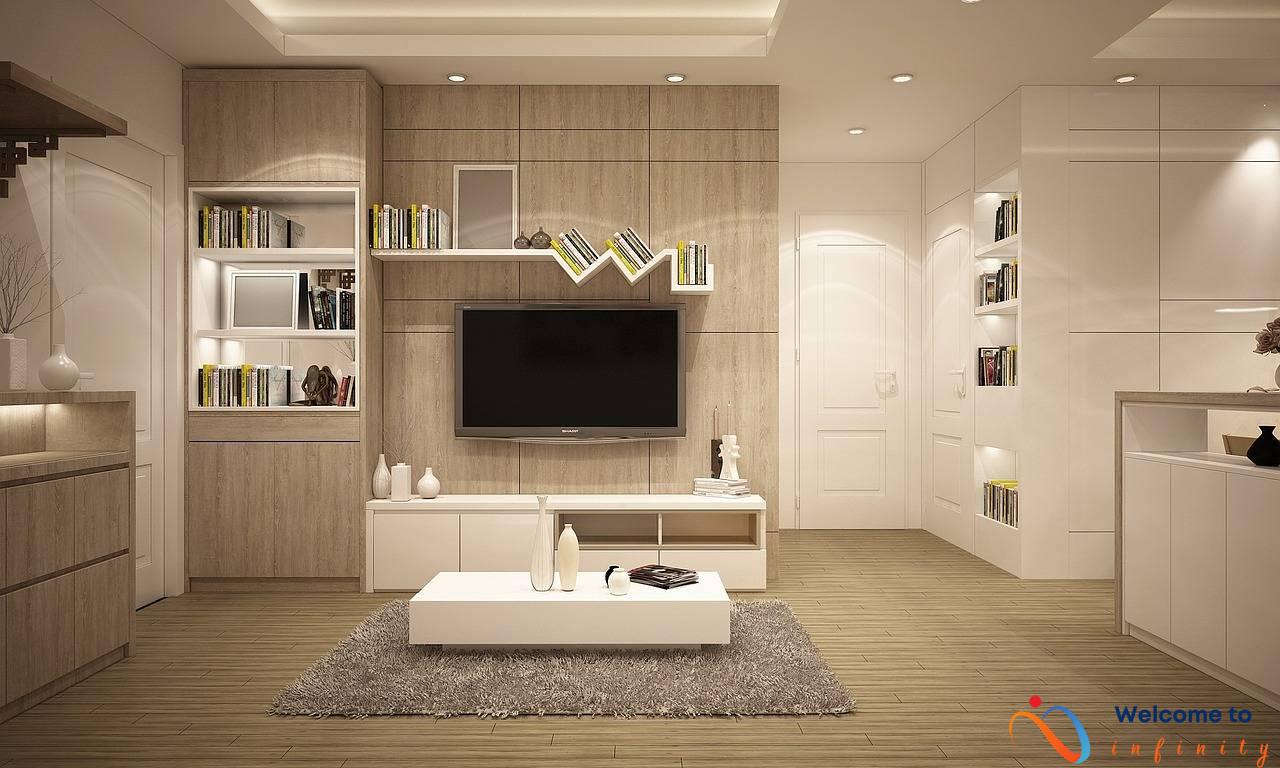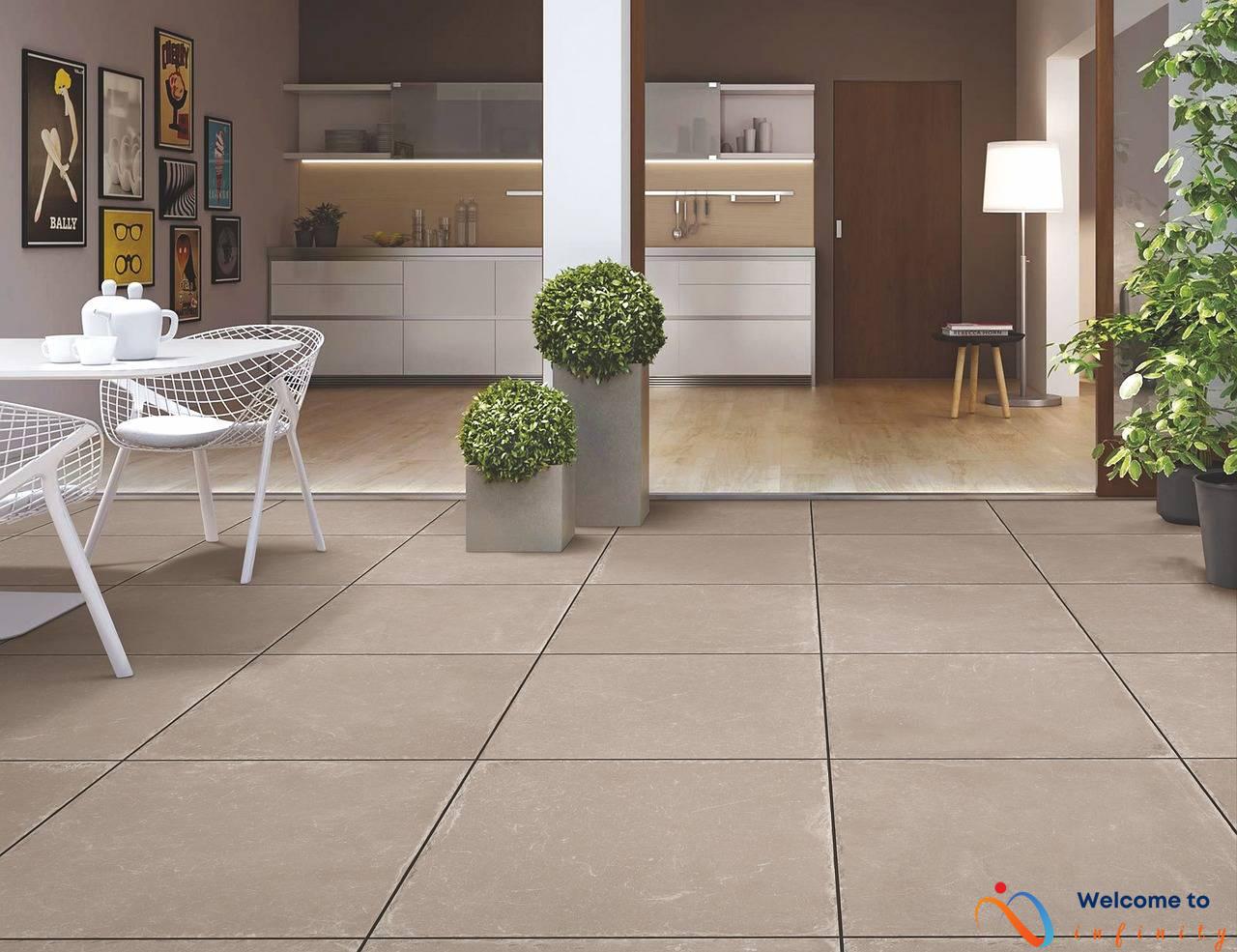In today's world, more and more people are finding themselves living in small spaces. But just because your living space is limited doesn't mean that you can't live comfortably and stylishly. In fact, Scandinavian design principles are centered around creating welcoming and functional spaces, no matter how small they may be. Let's take a closer look at some Scandinavian ideas for making the most out of small living spaces.
One of the most fundamental principles of Scandinavian design is simplicity. By removing unnecessary clutter and sticking to a minimalistic design, you can actually create a feeling of spaciousness and promote well-being in your home. Another important aspect of Scandinavian design is functionality and flexibility. In small spaces, it's essential to use multifunctional furniture pieces that can adapt to different uses and provide you with maximum usage of space.
Another advantage of the Scandinavian design approach is their focus on open-plan living. Breaking down barriers between different rooms can create an illusion of more space and make the most out of small areas. For instance, you can create a multi-purpose room by using the same space for different activities, such as a home office or a guest room, which can be transformed based on your needs and preference.
Intrigued yet? This article will delve deeper into how Scandinavian design can help you live small, live well. From the benefits of multifunctional furniture to the transformative power of natural light and color, you'll learn how to make every inch of your small living space work for you. Keep reading to find out more!
Simplicity is Key
When it comes to designing your small living space, simplicity can be a powerful tool. By removing excess clutter, you can create space and promote well-being in your home. Scandinavian design principles emphasize a minimalist approach, reminding us that less is often more.
One of the most important aspects of simplicity in small spaces is organization. By having designated spaces for your belongings and keeping them tidy, you can create an illusion of spaciousness. Consider incorporating hidden storage and shelving into your design to eliminate clutter and keep your belongings out of sight.
- Use organizers for your clothes and shoes.
- Install shelves on the walls to display decorative objects and books while keeping them readily accessible.
- Keep kitchen countertops and tables clear of unnecessary items.
Incorporating natural fibers, such as linen or wool, can add to the simplicity of the space while also promoting well-being. These materials are both practical and aesthetically pleasing, adding a touch of coziness to a space.
Remember, simplicity does not necessarily mean stark or sterile. By incorporating simple yet stylish pieces, your space can achieve a sense of elegance and refinement. Harness the power of simplicity to create a peaceful environment that is both functional and relaxing.
Functionality and Flexibility
Living in a small space can be challenging, but with a few smart design choices, it can also be comfortable and enjoyable. Scandinavian design principles are known for their focus on simplicity, functionality, and flexibility, making them a great source of inspiration when it comes to small-space living.
One key strategy for making the most of a small living space is to choose multifunctional furniture. For example, a sofa that can be easily converted into a guest bed or a coffee table that doubles as a storage chest can help to maximize space. Open-plan living is another popular Scandinavian design principle that can make a small home feel more spacious. Breaking down barriers between rooms can create a sense of flow and openness.
Additionally, flexibility is crucial in a small space. With limited square footage, it's important to be able to use each room for multiple purposes. Creating a multi-purpose room, such as a home office that can double as a guest room, can help to make the most of limited space. In a small home, every square foot counts, and using furniture that can be easily moved or folded away can help to create a more adaptable living space.
When considering furniture and layout choices, it's important to think about how they will function in your daily life. Will they be comfortable and practical to use on a daily basis? Will they be versatile enough to adapt to changing needs over time? By prioritizing functionality and flexibility in your design choices, you can create a living space that works for you, no matter how small it may be.
The Multi-Purpose Room
Living in a small space requires creative thinking and efficient use of available space. A multi-purpose room is an excellent solution to make the most out of limited space. It is a room that can be transformed to serve various functions, depending on your needs. Creating a multi-purpose room requires thoughtful planning and the right choice of furniture.
The first step is to identify the primary use of the room and which other functions it can serve. For instance, a guest room can also be used as an office or a hobby room. Once you have decided on the primary function and other potential uses, you can start planning the layout and furniture arrangement.
For a multi-purpose room, flexibility is key. Use multifunctional furniture that can serve multiple purposes, such as a desk that doubles as a dining table or a storage ottoman that can also be used as a coffee table. Folding chairs and tables can be kept in a closet and pulled out when needed. A bookshelf can be used to store books and also serve as a room divider.
Another great idea is to use furniture with hidden storage. A bed with drawers underneath can be used to store bedding and linens. A storage bench can be used to store shoes, seasonal clothes, or even toys. This will help free up space and keep your room clutter-free.
Lastly, lighting is essential in a multi-purpose room. Use task lighting for specific functions like reading or working, and ambient lighting to create a cozy and warm atmosphere. Finally, add some personal touches with some decorative elements like plants, artwork, and rugs to make the room feel inviting and comfortable.
In conclusion, creating a multi-purpose room can be challenging, but with the right planning and furniture, it can become a highly functional and efficient space. Use multifunctional and flexible furniture, storage solutions, and appropriate lighting to make your multi-purpose room perfect for different uses while still feeling cozy and welcoming.
The Murphy Bed
Have you ever heard of a Murphy bed? If you're looking for ways to save space in your small home, a Murphy bed might be just what you need. These unique beds are hinged to fold up against the wall when not in use, providing you with more space during the day.
One of the main benefits of a Murphy bed is that it can double as a workspace or storage area when not being used as a bed. You can easily pull it down and voila! You have a comfortable sleeping arrangement. Murphy beds come in a variety of styles and sizes, and some even come with built-in storage units.
If you're worried about the installation process, don't be. Most Murphy beds are designed to be easily mounted to the wall without the need for additional support. You can even purchase DIY Murphy bed kits if you're feeling handy.
Investing in a Murphy bed is a great way to make the most out of your small living space. It's a space-saving solution that doesn't compromise on comfort, making it a practical and stylish addition to any small home.
The Convertible Sofa
One of the biggest challenges of living in a small space is finding furniture that serves multiple purposes. Luckily, there are plenty of options to choose from, including the ever-versatile convertible sofa. Not only does it provide a comfortable place to lounge during the day, but it can also be transformed into a bed at night for guests.
Convertible sofas come in a variety of styles and sizes, making them a great option for any small living space. Some models even have additional storage built into them, providing even more functionality in a single piece of furniture.
- Opt for a model with a simple design as they tend to take up less space and are easier to convert.
- Look for a sofa with a high-quality mattress to ensure your guests get a comfortable night's sleep.
- Choose a color and fabric that complements your decor and is easy to clean.
With a convertible sofa, you can entertain guests without sacrificing valuable space. And when it's not being used as a bed, it provides a comfortable spot to relax and unwind. Take advantage of this versatile piece of furniture to make the most out of your small living space.
Open-Plan Living
One of the best ways to make a small home feel bigger is by embracing open-plan living. This design concept involves removing walls and creating one large, multi-functional space that includes the living room, kitchen, and dining area.
The benefits of open-plan living are numerous. Firstly, breaking down barriers in your home makes it feel more spacious and allows natural light to flow through the space. You'll be amazed at how much brighter and airier your home feels once the walls are gone.
Furthermore, open-plan living allows for more flexibility in how you use the space. It's much easier to cook and entertain guests when you don't have to navigate through narrow doorways and cramped rooms. An open-plan space can also be easily adapted to accommodate different activities, making it a great choice for families with children or those who frequently have guests over.
When designing an open-plan living space, it's important to consider the placement of furniture and how it will be used. Use rugs and furniture to create ‘zones' within the space and ensure that each area has a clear purpose.
An open-plan living area also allows you to take advantage of the views and natural light outside. Large windows and glass doors can be used to create a seamless connection between your indoor and outdoor spaces.
Overall, open-plan living is an effective way to make the most out of a small space. By breaking down barriers in your home, you can create a more functional, flexible, and spacious living space that promotes relaxation and well-being.
The Power of Light and Color
Light and color are critical elements that can significantly affect the perception of space and mood in a small home. By utilizing light and color to your advantage, you can provide a sense of openness and well-being in your living space.
Natural light is always the best source of illumination for a small home. It makes your home feel bigger, brighter, and more welcoming. You can maximize natural light by keeping your windows clean, ensuring no obstructions are blocking the light, and choosing window treatments that let in as much light as possible.
In addition to natural light, artificial lighting can also be used to create a sense of space and ambiance in your small home. Lamps and up-lighting fixtures can create the illusion of a higher ceiling, while dimmer switches can provide a cozy, intimate atmosphere at night.
Color is another critical factor to consider when designing a small home. By using light and neutral colors, you can make your living space appear more open and airy. Darker hues tend to make a room feel smaller, so it's best to use them sparingly as accents.
When choosing colors, take into account their psychological effects. Warm colors like reds and oranges can create a sense of energy and excitement, while cooler shades like blues and greens can have a calming effect on your mood. It's important to strike a balance between warm and cool colors to create a cohesive, inviting space.
In summary, the power of light and color should not be underestimated when it comes to designing a small home. By using natural light, artificial lighting, and color psychology to your advantage, you can create a space that feels open, welcoming, and comforting.
Natural Light
Natural light is a key element in Scandinavian design and can play a significant role in making a small home feel larger and more welcoming. Maximizing the amount of natural light in your home can have a positive impact on your mental and physical well-being.
To increase natural light in your home, try keeping window areas clear of clutter and obstructions. Consider replacing heavy curtains with translucent shades or sheer drapes to allow more light to pass through. Adding mirrors opposite windows can also help to reflect and amplify natural light.
Additionally, consider painting your walls in light colors, such as white or light shades of blue or green, as they reflect light more efficiently than darker colors. Using glossy finishes on surfaces, such as floors and countertops, can also help to reflect light and create a brighter atmosphere.
When adding artificial lighting to your home, seek out warm, soft-toned bulbs that mimic natural light. Table and floor lamps can be used to provide additional lighting where needed, but try to avoid harsh, bright-white bulbs.
In summary, incorporating as much natural light as possible in your small home can make a significant impact on your day-to-day life. By making a few simple adjustments and choosing the right finishes and lighting, you can create a brighter, more inviting living space that you'll love spending time in.
Color Psychology
Color psychology is the study of how different colors can influence human behavior, emotions, and overall mood. In a small home, the right choice of colors can create a sense of space and calmness, making the home feel larger and more welcoming.
Neutral colors, such as white, beige, and gray, are commonly used in Scandinavian design and are perfect for creating a sense of space in small homes. These colors are versatile and adaptable to any design style, creating a harmonious and refreshing environment.
On the other hand, bright and bold colors can be used to create specific moods and emotions in a small space. For example, blue is known for its calming effects, making it the perfect choice for bedrooms and bathrooms. Green is associated with nature and freshness, making it a great choice for living rooms and kitchens. Yellow is known for its happy and uplifting qualities, making it an excellent choice for home offices and playrooms.
It's important to remember that the colors you choose for your small home should reflect your personal taste and style. Take some time to consider which colors make you feel calm, happy, or inspired, and use these colors to create a personalized and welcoming space.
- Neutral colors such as white, beige, and gray are versatile and adaptable to any design style.
- Bright and bold colors can be used to create specific moods and emotions in a small space.
- Blue is calming, green is fresh and natural, while yellow is happy and uplifting.
By considering the psychological effects of color and using them to your advantage, you can create a small home that promotes a sense of space, calmness, and overall well-being.












